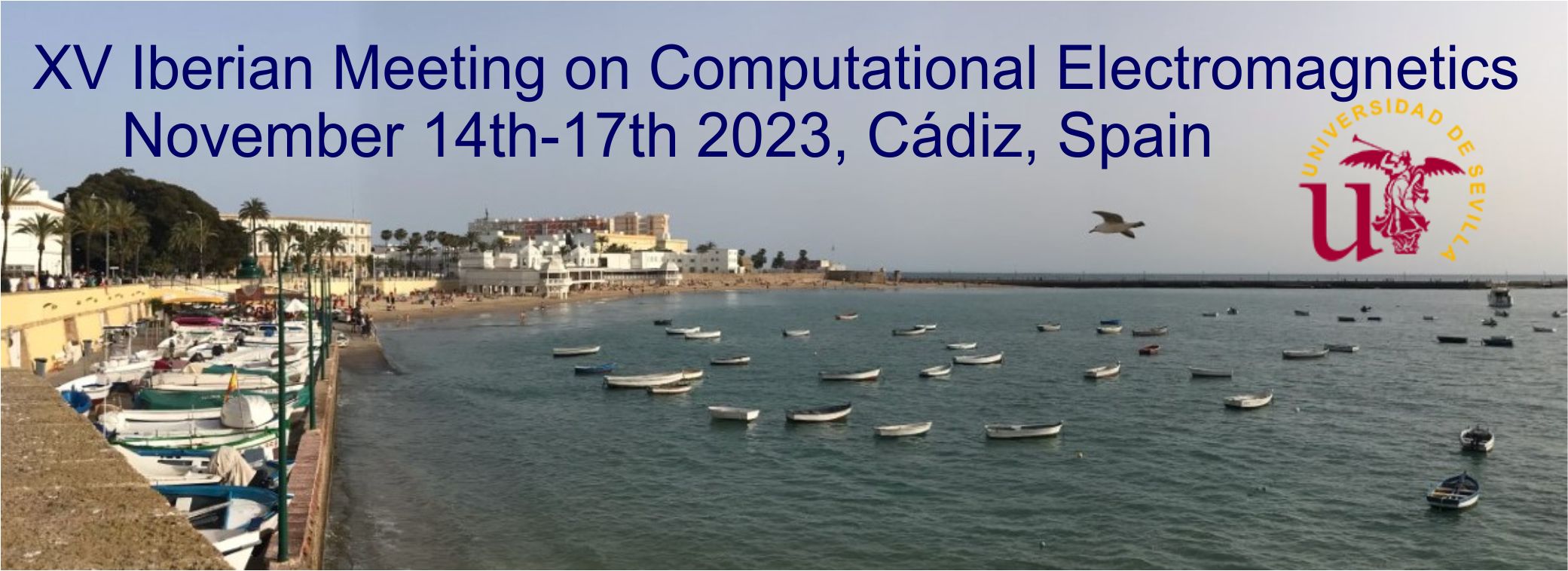

Since its first edition in Laredo (Cantabria), in July 2000, the Iberian Meeting on Computational Electromagnetics (also known by its translation in Spanish/Portuguese “Encuentro/Encontro Ibérico de Electromagnetismo Computacional”) was held with great success on thirteen additional occasions: Aracena (Huelva, 2001), Sedano (Burgos, 2003), Seia (Guarda, 2005), Aiguablava (Girona, 2007), Chiclana de la Frontera (Cádiz, 2008), Monfragüe (Cáceres, 2010), Sesimbra (Setúbal, 2011), Denia (Alicante, 2013), Baeza (Jaén, 2015), Las Caldas (Asturias, 2016), Coímbra (2018), Potes (2019) and Núria (Girona, 2022). In the fifteenth edition to be held in November 2023, the meeting moves to the South-West of Spain, and it will be organized by the Microwaves Group of the University of Seville in the three times millennial town of Cádiz (Andalucía), one of the most ancient cities in the west of Europe.
EIEC meetings allow the exchange of knowledge between members of Portuguese and Spanish research groups working on computational electromagnetics applications in the various branches of Physics and Electrical Engineering by providing a highly specialized environment. These contacts contribute to forging closer ties in a community whose activity could be diluted in forums with a broader scope, favoring the establishment of partnerships that eventually lead to the development of joint projects.
Traditionally, EIEC tries to promote dialogue and the sharing of ideas among participants outside the program sessions. For this reason, all the editions have been held in small towns and picturesque villages, avoiding the dispersion of the participants and encouraging them to group together in lunches, dinners and social life. In particular, “Hotel Occidental Cádiz” has been chosen as the venue for the XV edition. Although Cádiz is a seaside touristic town and the “Hotel Occidental Cádiz” can be very crowded in summer, in Autumn the hotel shows a peaceful atmosphere and it is ideal for intellectual work and scientific brain storming.
The meeting favors the introduction of longer speeches, as opposed to a conference or symposium, allowing the groups to present the research lines they are currently working on and the most relevant results and state of the art in the various topics covered. Also, all presentations are collected in a single oral session so that all participants can attend the presentations of the rest of participants, and the knowledge exchange is maximized.
The meeting covers the following topics: